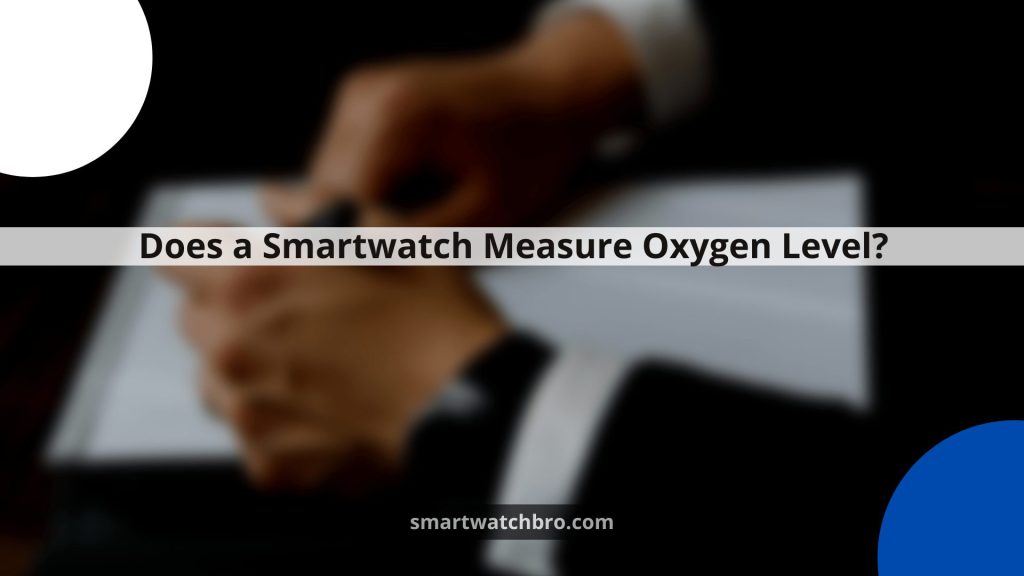
Does a smartwatch measure oxygen level? Smartwatches that track heart rate also track oxygen levels. A new study shows that watches can indicate how well a person breathes.
Like a pulse oximeter, smartwatches measure the oxygen level in a patient’s blood. SpO2 and PPG measurements taken from the wrist measure oxygen levels but are also less accurate than those taken from the fingertip Since smartwatches come with multiple oxygen monitors.
Although SpO2 is said to measure 90 to 95 accuracy while PPG measures 85 percent, both are meant only for general well-being.
Most modern smartwatches and fitness trackers already contain these sensors. There is, however, one concern: not all wearable manufacturers implement these sensors equally.
How does a smartwatch measure blood oxygen?
Measuring your blood oxygen levels is important—this knowledge can help to catch problems early and prevent long-term damage. Check out how a smartwatch measures oxygen levels, works and uses photoplethysmography and SpO2 to measure blood oxygen levels.
Introduction
Doctors, physicians, and nurses measure blood oxygen levels using finger oximetry. Aside from using the fingertip to measure pulse oxygen saturation, they can also use smaller body parts such as earlobes or infants’ toes. Technology is gaining acceptance in hospitals as it continues to be developed.
However, The amount of light absorbed and transmitted by the finger is used to calculate the percentage of oxygen in the blood. The approach for determining blood oxygen saturation has recently gained widespread acceptance.
What is the process by which a smartwatch measures oxygen levels?
Wrist-worn wearable smart devices can measure and transmit a range of vital data. For medical applications, one of the most important and sensitive data to collect is blood oxygen level. Measure the blood oxygen level in the human body; smartwatches have two types of sensors used to measure blood saturation levels.
How does a Photoplethysmography sensor work to measure oxygen level?
A PPG optical sensor measures arterial oxygen saturation (SpO2). The PPG, or optical heart rate sensor, measures your heart rate based on the light reflected from your skin.
Movement and noise profoundly affect the photoplethysmographic (PPG) signals from pulse oximeters. PPG’s transferring and detecting channels are sensitive to ambient light and motion, despite the technology’s low barrier to entry and low cost.
They use an external light sensor to estimate the distance between micro-optical sensors and skin, thus reducing proximity-induced noise and improving PPG channel noise. They use MEMS to measure motion signals and filter out the associated noise to eliminate disturbances.
How does SpO2 work to measure blood oxygen level?
The SpO2 sensor works similarly to the PPG sensor. In contrast to PPG sensors, smartwatch SpO2 sensors emit red and infrared light into your skin to detect your heart rate, rather than green light. An algorithm is then used to determine your blood oxygen levels based on the way light reflects back from the device.
They both benefit from transmittance pulse oximetry in frigid conditions since the blood supply to the tips of the body, where TPO occurs, is decreased in those conditions.
What do we need to consider when measuring the Oxygen level on a smartwatch?
In terms of keeping your health in check, a key factor is to keep your blood oxygen level in check. Considering the following factors is essential before taking the measurement:
- If you want reliable results, you should wear your smartwatch snuggly, not too tightly or too loosely.
- Smartwatches may sound inaccurate because of their small size and because they are worn so high on the arm of the wrist (where the artery is located).
- Before use, smartwatches should function without issue.
- Analyze the precision of the smartwatch.
- Check it in the morning and again at night.
- Ensure reliable readings by checking the transmissive pulse oximeter monthly.
- Compare your findings with those reported by doctors and other medical experts.
Smartwatch Oxygen Level Measurement Benefits
- Several modern smartwatches feature periodic and continuous blood oxygen measurements, allowing for 24-hour monitoring and data collection.
- A smartwatch can be connected to a smartphone so that the data from your watch can be instantly synchronized with your smartphone so that you can view your log of VO2 max readings whenever you desire.
Smartwatch Oxygen Level Measurement Drawback
The results from a smartwatch won’t seem as precise as those from a pulse oximeter, but they can still use to determine your blood oxygen level.
Smartwatches and fitness trackers are becoming common as technology enters the fitness space. Although different trackers differ dramatically in their features, most can monitor a person’s heart rate or pulse.
To understand how a smartwatch measures the oxygen level, we need to speculate that the device can measure blood oxygen in blood vessels by shining a light through them and measuring the reflected light.

